All Sky Camera (ASC)
The All-Sky Camera (ASC) is an optical device consisting of an optical system including a lens, a filter wheel, and a CCD, which observes the entire sky using a fisheye lens having a field-of-view of 180 degrees. By using a narrow-band filter that passes airglow of a specific wavelength, a camera can view two-dimensional images of atmospheric activity at a certain altitude, and thus can be important tools for studying ionospheric/upper atmospheric disturbances or wave propagation phenomena, such as aurora, gravity wave, traveling atmospheric disturbance Disturbance (TAD), and Traveling Ionospheric Disturbance (TID). Korea Astronomy and Space Science Institute (KASI) has been installing and operating an all-sky camera at the Bohyeonsan Astronomical Observatory (BAO) since March 2008 to investigate the ionospheric/upper atmospheric disturbance and wave phenomena over the Korean Peninsula. The BAO imager is an ultra-fast (f/0.95) 3-in telecentric all-sky imager, with a high-reliability shutter, an 6-position filter wheel with temperature stabilized, a Princeton Pixis 1024B CCD camera, and 2 narrow bandpass filters selected exclusively for the proposed research (OI5577 and OI6300). KASI and Johns Hopkins University have been installing and operating an all-sky camera in the space weather observatory of the Antarctic Jangbogo Station (JBS) from December, 2016 to observe the aurora and polar airglow phenomenon. The JBS imager is a fast (f/0.95) 3-in telecentric all-sky imager, with a high-reliability shutter, an 8-position filter wheel with temperature control, a Princeton Pixis 512F CCD camera, and 4 narrow bandpass filters selected exclusively for the proposed research(OI5577, OI6300, OH8342, Na5893).
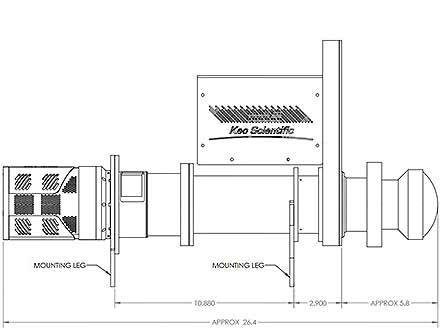
[ Optics image ]
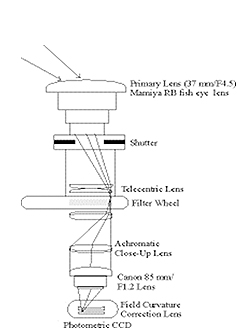
[ Optical System ]
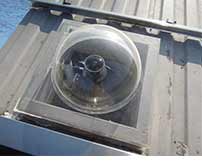
|
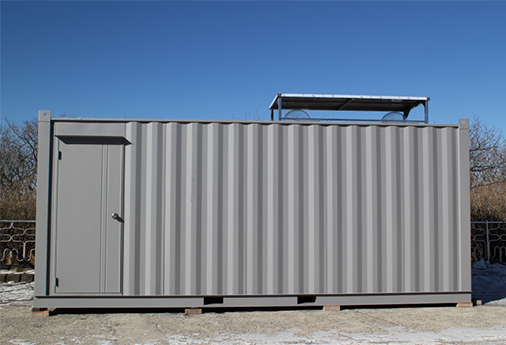
|
|

|
||
| [ All-sky camera at the Bohyeonsan Astronomical Observatory ] | ||
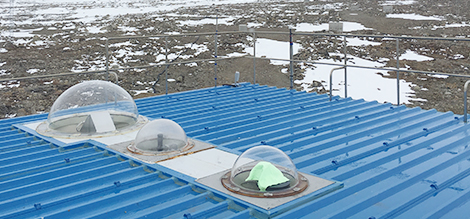
|
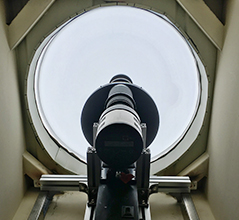
|
|
| [ All-sky camera at the Jangbogo Station in Antarctica ] | ||
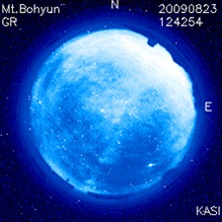
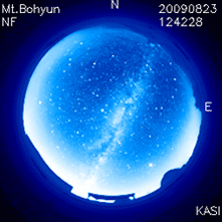

[ Image observed by All-sky camera at the Bohyeonsan : 557.7nm(left), no filter(middle), 630.0nm(right) ]
